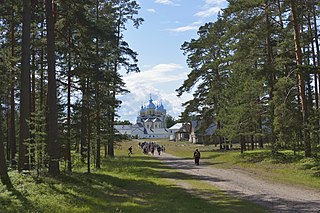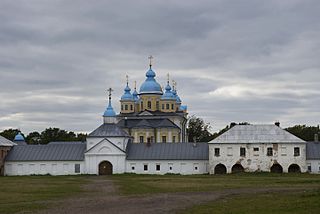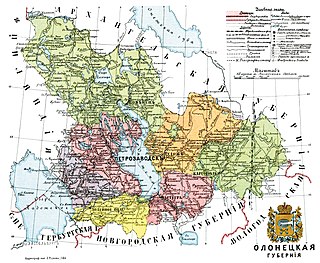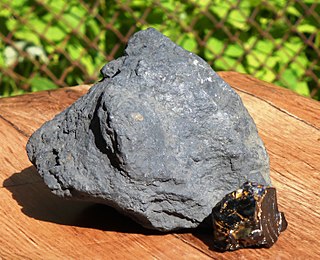 W
WThe coat of arms of Karelia in Finland were first used in 1562, although the arms were probably presented at the burial of Gustav Vasa in 1560. The arms were used for the Swedish province of Karelia and they have been used continuously since then. Variations of the arms are still used in two regions of Finland: North Karelia and South Karelia, in which the North Karelian version is the original one. Present day North Karelia wasn't part of Swedish Kingdom back in 1562. Sweden gained the area from Russia after the Treaty of Stolbovo in 1617. For the most part, present day South Karelia had belonged to Sweden from 1323 onwards, since Treaty of Nöteborg.
 W
WThe Cross of Sorrow is a memorial in Russia dedicated to the thousands of soldiers of both sides who perished in the Winter War of 1939–1940 when the Soviet Union attacked Finland. It is located in Pitkyarantsky District, Karelia, near the crossroads Pitkyaranta – Suojarvi / Petrozavodsk – Vyartsilya, 19 km off Pitkyaranta. It is the first monument to the Winter War in Russia.
 W
WEast Karelia, also rendered as Eastern Karelia or Russian Karelia, is a name for the part of Karelia that since the Treaty of Stolbova in 1617 has remained Eastern Orthodox under Russian supremacy. It is separated from the western part of Karelia, called Finnish Karelia or historically Swedish Karelia. Most of East Karelia is now part of the Republic of Karelia within the Russian Federation. It consists mainly of old historical regions of Viena and Aunus.
 W
WThe Karelian hot pot (British) or Karelian stew (US) is a traditional meat stew originating from the region of Karelia. It is commonly prepared using a combination of pork and beef, but elk or lamb can also be used. Along with the Karelian pasties (karjalanpiirakat), it is the most widely recognised Karelian food in Finland. In 2007, it was selected as the national dish of Finland by the readers of the Finnish tabloid Iltalehti. In similar poll organized by the ELO Foundation for the Promotion of Finnish Food Culture in cooperation with the Central Union of Agricultural Producers and Forest Owners MTK and the Finnish Ministry of Agriculture and Forestry in autumn 2016, Karelian hot pot took second place, losing to rye bread.
 W
WKarelian pasties, Karelian pies or Karelian pirogs are traditional pasties or pirogs from the region of Karelia. Today they are eaten throughout Finland as well as in adjacent areas such as Estonia and northern Russia.
 W
WKarelians are an ethnic group who are native to the Northern European historical region of Karelia, which is today split between Finland and Russia. Karelians living in Russian Karelia are considered a distinct ethnic group closely related to Finnish Karelians, who are considered a subset of Finns. This distinction historically arose from Karelia having been fought over and eventually split between Sweden and Novgorod, resulting Karelians being under different cultural spheres.
 W
WKonevets is an approximately 8.5-km² island famous as the site of the Konevsky Monastery. It is located off the southwestern shore of Lake Ladoga near the village of Vladimirovka. The island is part of the Priozersky District of Leningrad Oblast. The nearest town is Priozersk, which is located 40 km away from the island. The island of Valaam is 60 km away and Saint Petersburg is 170 km away by boat. There is a ferry link from Vladimirovka that makes the 6.5-km trip in 40–50 minutes.
 W
WKonevitsan kirkonkellot is a Karelian folk melody, best known as the 1975 recording of Finnish music group Piirpauke. It repeats the chime of the church bells of the Konevsky Monastery in Lake Ladoga. The melody was first recorded by kantele player Ulla Katajavuori in 1952. Other recorded versions include the 1978 version by Matti Kontio, Martti Pokela and Eeva-Leena Sariola, and the 2002 version by heavy metal band Sentenced, used as an intro in their album The Cold White Light.
 W
WKonevsky Monastery is a Russian Orthodox monastery that occupies the Konevets Island in the western part of the Lake Ladoga, Leningrad Oblast, Russian Federation. It is often regarded as the twin monastery with the Valaam Monastery, also located on an island group in the same lake.
 W
WLosevo is a rural locality in Priozersky District, Leningrad Oblast, located at the junction of Vuoksi River and Lake Sukhodolskoye on Karelian Isthmus. It is a railway station of the Saint Petersburg–Khiytola railroad. Before the Winter War and Continuation War, it was a village of the Sakkola municipality of Finland known as Kiviniemi.
 W
WThe Olonets Governorate or Government of Olonets was a guberniya (governorate) of north-western Imperial Russia, extending from Lake Ladoga almost to the White Sea, bounded west by Finland, north and east by Arkhangelsk and Vologda, and south by Novgorod and Saint Petersburg. The area was 57,422 m², of which 6,794 m² were covered by lakes.
 W
WThe Sestra is a river in Vsevolozhsky and Vyborgsky Districts of Leningrad Oblast and Kurortny District of Saint Petersburg, Russia. The length of the Sestra is 74 kilometres (46 mi), and the area of its basin is 399 square kilometres (154 sq mi).
 W
WThe Riihimäki–Saint Petersburg railway is a 385-kilometre (239 mi) long segment of the Helsinki–Saint Petersburg connection, which is divided between Saint Petersburg and Leningrad Oblast in Russia and the province of Southern Finland in Finland.
 W
WThe Saint Petersburg–Hiitola railway is a 170-kilometer (110 mi) long railway with 1,520 mm broad gauge located in St. Petersburg, Leningrad Oblast and Republic of Karelia, which links Finlyandsky Rail Terminal to Khiytola through Devyatkino, Vaskelovo, Sosnovo, Priozersk and Kuznechnoye. Originally built by Finnish State Railways in the Grand Duchy of Finland, the railway was part of a trunk line from Vaasa by the Gulf of Botnia to St. Petersburg. In the 1940 Moscow Peace Treaty the territory was ceded by Finland to the Soviet Union. The railroad is now operated by the Russian Railways. The railroad is used by passenger trains between St. Petersburg and Sortavala. The track between Khiytola and Sortavala is a part of the Vyborg–Joensuu railroad completed in 1894.
 W
WShungite is a black, lustrous, non-crystalline mineraloid consisting of more than 98 weight percent of carbon. It was first described from a deposit near Shunga village, in Karelia, Russia, from where it gets its name. Shungite has been reported to contain trace amounts of fullerenes.
 W
WThe Sumsky Skerries are an extensive cluster of islands, islets and shoals in the White Sea. They are located in the Onega Bay, close to its southern shore.
 W
WThe Sestra is a river in Vsevolozhsky and Vyborgsky Districts of Leningrad Oblast and Kurortny District of Saint Petersburg, Russia. The length of the Sestra is 74 kilometres (46 mi), and the area of its basin is 399 square kilometres (154 sq mi).
 W
WThe Unknown Soldier or Unknown Soldiers is a war novel by Finnish author Väinö Linna, considered his magnum opus. Published in 1954, The Unknown Soldier chronicles the Continuation War between Finland and the Soviet Union during 1941–1944 from the viewpoint of ordinary Finnish soldiers. In 2000, the manuscript version of the novel was published with the title Sotaromaani and in 2015, the latest English translation as Unknown Soldiers. A fictional account based closely on Linna's own experiences during the war, the novel presented a more realistic outlook on the formerly romanticized image of a noble and obedient Finnish soldier. Linna gave his characters independent and critical thoughts, and presented them with human feelings, such as fear and rebellion.
 W
WVyborg is a town in, and the administrative center of, Vyborgsky District in Leningrad Oblast, Russia. It lies on the Karelian Isthmus near the head of the Vyborg Bay, 130 km to the northwest of St. Petersburg and 38 km south of Russia's border with Finland, where the Saimaa Canal enters the Gulf of Finland. The population of Vyborg is as follows: 79,962 (2010 Census); 79,224 (2002 Census); 80,924 (1989 Census).
 W
WThe old Karelian railroad between Viipuri (Viborg) and Joensuu is a 1,524 mm broad gauge line that used to link Joensuu, Sortavala, Hiitola, Antrea, and Viipuri (Vyborg). Originally built in 1892-1894 by Finnish State Railways in the Grand Duchy of Finland, in the 1940s most of the railway up to Niirala was ceded by Finland to the Soviet Union in the Moscow Peace Treaty, Moscow Armistice and Paris Peace Treaty as a result of the Winter War and Continuation War. Now the track is located in Leningrad Oblast, Republic of Karelia and North Karelia. The Sortavala–Joensuu link across the border was abolished after the Continuation War, but was since restored and is currently in use for cargo traffic.
 W
WThe Zazhoginskoe field is one of the richest Russian field of shungite on the territory of the Republic of Karelia.